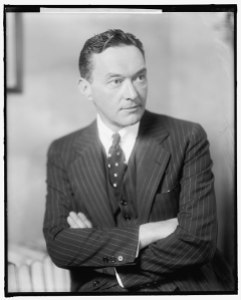
Should someone from the business side of a major newspaper — up to and including the owner — sit in on a news meeting? Generally speaking, the answer is no, but I’m not sure that there’s any hard and fast rule. An ethical owner will not interfere in the news coverage in any way. But that doesn’t necessarily mean they can’t listen.
In early 2017, when I was reporting for my book “The Return of the Moguls,” I was allowed to sit in on a Boston Globe news meeting presided over by the paper’s editor, Brian McGrory. I was somewhat surprised to see co-owner Linda Henry, now the CEO, sitting off to one side, taking notes. She said nothing, and it didn’t strike me as inappropriate — just a bit unexpected.
Another owner I was tracking, Jeff Bezos, was a different story. According to everyone I spoke with, Bezos was entirely hands-off with the news operations of The Washington Post, although he was deeply involved in various business and technology initiatives. By all accounts, Amazon’s founder was a model newspaper owner, leaving his journalists alone to cover the news — including Bezos’ own interests — as they saw fit.
So I was surprised to learn in The New York Times (free link) that Bezos had recently sat in on a news meeting at the Post and listened as executive editor Sally Buzbee and her lieutenants discussed several story ideas that no doubt piqued Bezos’ interest. According to the Times’ Benjamin Mullin and Katie Robertson:
Other than Mr. Bezos’ appearance, the news meeting proceeded as it might on any other day, with editors discussing news stories and readership trends, according to the people with knowledge of the meeting. At one point, an editor mentioned plans to run an article about the discontinuation of AmazonSmile, a charity program that Mr. Bezos championed. The editors also discussed the pending sale of the Washington Commanders. The Post previously reported that Mr. Bezos was interested in buying the National Football League team.
Now, you might say that Buzbee’s predecessor, the legendary Marty Baron, never would have allowed such a breach of the wall between the news and the business sides. Well, maybe, maybe not. Because Mullin took to Twitter and reported that he’d heard the same thing had happened at least once during the Baron years. “For what it’s worth: Someone told me this happened in an editorial meeting under Marty Baron, who turned to Jeff and asked him for comment on the spot,” Mullin tweeted. “I’m told Jeff gave a big Jeff laugh and no-commented.”
For what it's worth: Someone told me this happened in an editorial meeting under Marty Baron, who turned to Jeff and asked him for comment on the spot. I'm told Jeff gave a big Jeff laugh and no-commented https://t.co/WJrp5qyuBr
— Ben Mullin (@BenMullin) January 19, 2023
After years of growth and profits under Bezos, the Post is now losing both circulation and money (another free link; hey, it’s almost the end of the month, when the meter resets). I’ve written before that I think the greatest risk to the Post is that Bezos may be losing interest, so at least his recent meeting suggests that it still engages him. But for someone who seems to have been scrupulous about not interfering in the Post’s news coverage, he ought to be self-aware enough not to sit in on news meetings.
By the way, I should note that though ethical owners and publishers keep their hands off news coverage, that’s not the case on the opinion side. The Post, the Globe and most other large dailies have a strict separation between news and opinion, with the top editors of those operations reporting directly to the publisher. It is entirely ethical for publishers to get involved in the opinion section, and both Linda and John Henry have done that over the years. Bezos, by all accounts, has been as uninvolved in the Post’s opinion operation as he is in news coverage — but that’s his choice. It’s not a requirement.
A final note: In Semafor on Sunday, Ben Smith wrote an item headlined “The Billionaire Era in News Is Fizzling,” building on the Times’ report about Bezos and the Post. Smith lists a bunch of them, from Bezos to Laurene Powell Jobs at The Atlantic and Dr. Patrick Soon-Shiong at the Los Angeles Times.
But John Henry, a billionaire financier, is nowhere to be seen — even though in his own take-it-slow way he’s rebuilt the Globe into a growing and presumably profitable (he hasn’t said for several years, but he keeps hiring) enterprise. Sounds to me like bias against what is still seen in many quarters as a provincial outpost.







